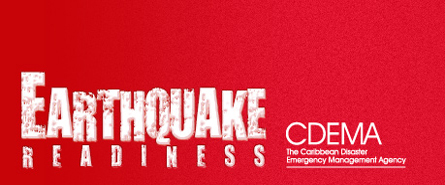: strtotime(): It is not safe to rely on the system's timezone settings. You are *required* to use the date.timezone setting or the date_default_timezone_set() function. In case you used any of those methods and you are still getting this warning, you most likely misspelled the timezone identifier. We selected the timezone 'UTC' for now, but please set date.timezone to select your timezone. in
: date(): It is not safe to rely on the system's timezone settings. You are *required* to use the date.timezone setting or the date_default_timezone_set() function. In case you used any of those methods and you are still getting this warning, you most likely misspelled the timezone identifier. We selected the timezone 'UTC' for now, but please set date.timezone to select your timezone. in
|
Communication and
Reporting Procedures
After an earthquake, the following may occur:
- Loss of electrical power and telephone lines may disrupt communication systems for a long period
- The telephone switchboard may be swamped by incoming calls if it is working
- Traffic may jam-up around the school
- Unauthorised persons may volunteer to take students home
The response plan should contain a communication plan prepared in association with the NDO, designed to be consistent with the national emergency plan. The communication plan should provide for alternative ways to convey and receive messages.
Reporting procedures should be addressed, for example:
- To whom reports should be given
- How to report, in the absence of telephone and power
- The use of local radio and TV stations
- Identify and educate on a primary and secondary source for information (i.e xxx AM and yyy FM)
- What information should be given (e.g., condition of buildings and occupants, emergency situations)
- If not already in place by the disaster management officials, set in place agreements with the primary and secondary information sources to assure they will provide information if requested for parents and relatives
- Do not contribute more than necessary to the overloading of emergency systems (e.g., in the first ninety minutes use telephones only to report life threatening situations).
Copies of the communications plan should be retained in every school and also by all the local emergency organizations.
Periodically, simulation exercises should be carried out to test the effectiveness of the plan, assuming a variety of scenarios.
The following equipment items are suggested for each school to facilitate communications. Such items can also have application in other more normal situations:
- Public address system installation can be linked to an emergency power system such as that provided for the normal emergency lighting
- Battery-powered megaphone.
back to top
Parent Awareness
The most important feature of a communications plan is the means for communicating with parents. It is imperative that parents are aware of the plan. Otherwise, they may risk their own safety and also impede organised procedures in their efforts to retrieve their children.
- Maintain rosters of students with contact information for parents and emergency contacts.
- Ask parents to make an earthquake plan for their homes and to talk about earthquake safety.
- The policies and rules that parents should follow must be clearly stated at parent meetings and in letters to parents. At least one such letter per year should be sent. It would be most effective to also send a letter immediately after public news of an earthquake elsewhere. The following is a sample letter:
Dear Parent:
Because our school is located in an earthquake-prone area, we want to remind you that, in the event of an earthquake occurring, the following procedures will be followed:
No student will be dismissed from school unless a parent (or guardian designated by a parent) comes for him/her.
No child will be allowed to leave with another person, even a relative or babysitter, unless we have written permission to that effect or that particular person is listed on the student's emergency card in our files. With this in mind, if your child's card is not up-to-date, please request a new card from our office.
All parents or designated guardians who come for students must sign them out at the office or at the alternative Student Release Station at the entrance to the school yard. Signs will be posted (indicate where) if in an emergency an alternative location is being used.
We are prepared to care for children in the event of a critical situation or if parents are not able to reach the school. We have a number of people with first aid certificates and will be in communication with local emergency services. We do ask for your help in the following areas:
- please do not call the school; we must have the lines open for emergency calls
- following an earthquake or other emergency, do not immediately drive to the school -- streets and access to our school may be cluttered with debris; the school access route and street entrance areas must remain clear for emergency vehicles
- do turn your radio to ____________ or ____________on the AM/FM dial; information and directions will be given over the radio.
back to top
|













